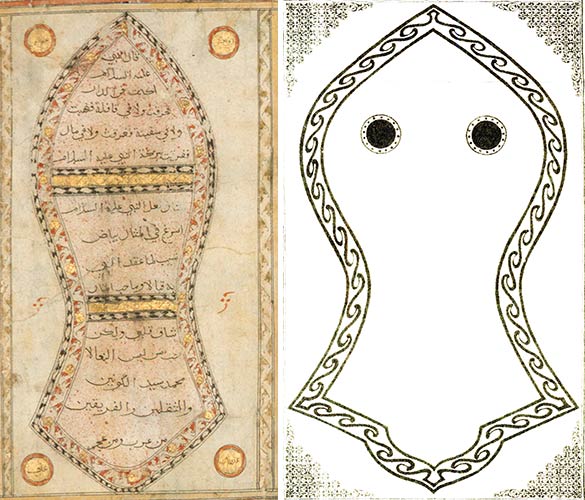Stephen E. Ostrow Distinguished Visitors Program
Fall 2017
Finbarr Barry Flood
"Amplifying Aura? The Prophetic Sandal in the Ages of Its Technological Reproducibility"
Wednesday, April 5 at 7:00pm
Vollum Lecture Hall

Although recent controversies about the historical representation of the Prophet Muhammad have focused on figural paintings, these were relatively rare and circulated in a limited milieu. More commonly, he was represented metonymically, by depictions of his footprint or sandal, for example. The most famous sandal relic was kept in Damascus, and from the twelfth century onward images of this sandal relic were generated by tracing its outline. Tracings of tracings were often generated in their turn, disseminating the image of the sandal and its blessings from Morocco to India.
This enchained series continued into modernity, when new print technologies and photography were applied to the reproduction of the sandal’s image. The deployment of modern technologies of mass (re)production is directly related to ongoing debates within Islam about the acceptability of relics, shrine veneration, and mediation. However, the perceived ability of mass-produced images to transmit the amuletic charisma of the original relic also raises larger questions about images, indexes, and the mediation of prophetic aura
Finbarr Barry Flood is William R. Kenan Jr. Professor of the Humanities in the Institute of Fine Arts and College of Arts and Sciences at New York University. He earned a PhD from the University of Edinburgh in Islamic Art History and a B.A. from Trinity College in Archaeology with Mental and Moral Science. He specializes in art and architecture of the Islamic world and cross-cultural dimensions of Islamic material culture and is the author of numerous books, articles, and essays.